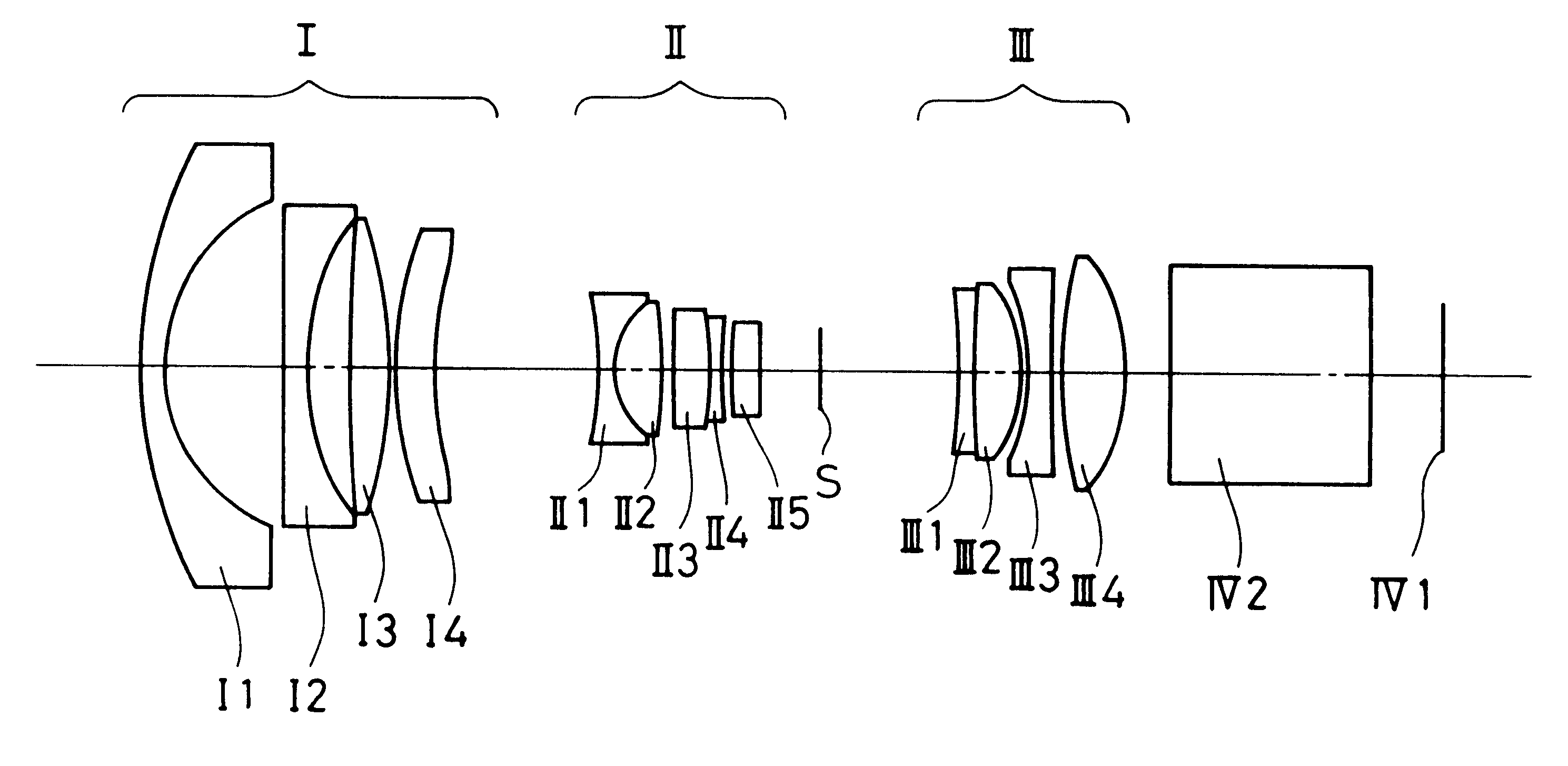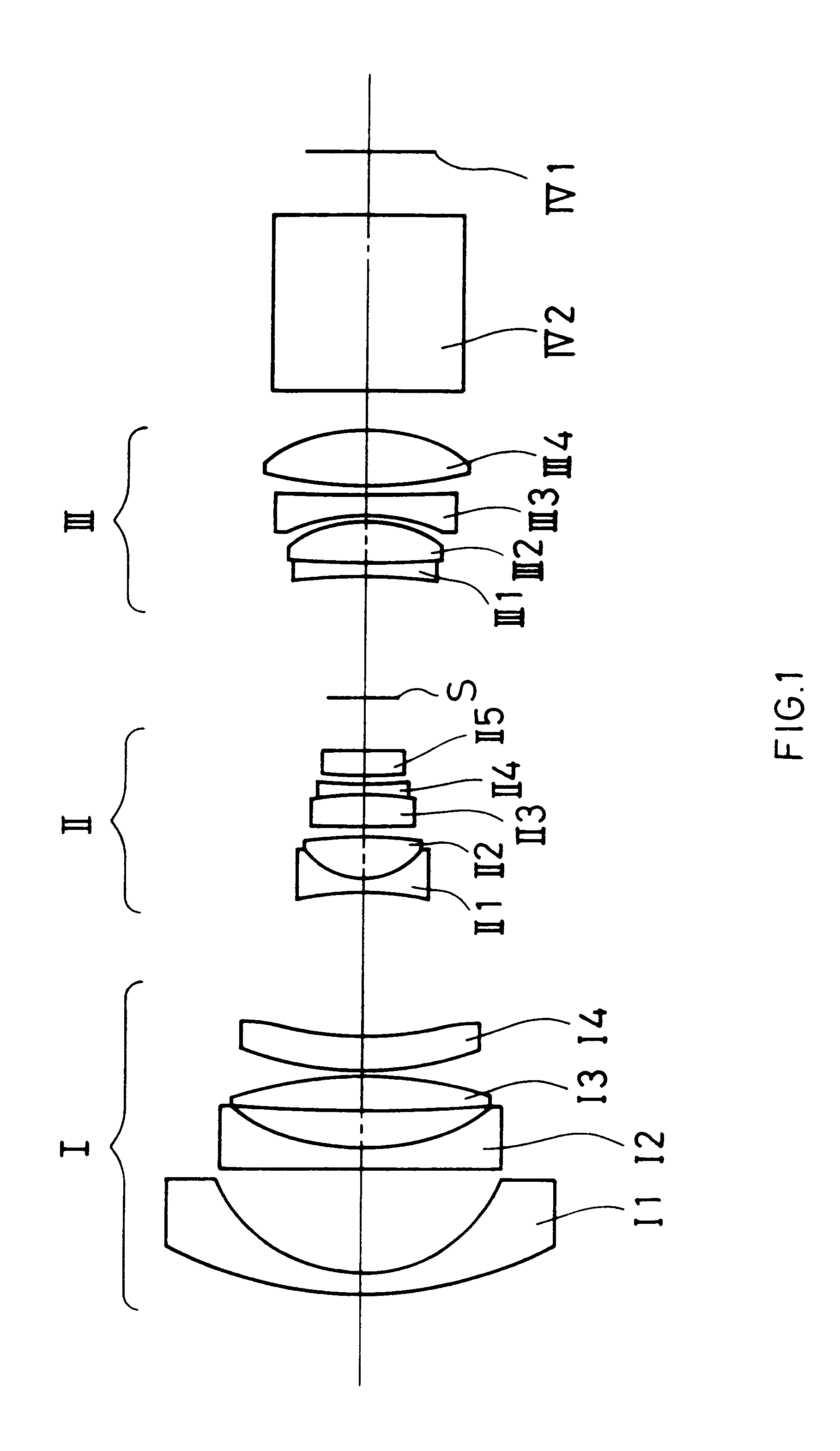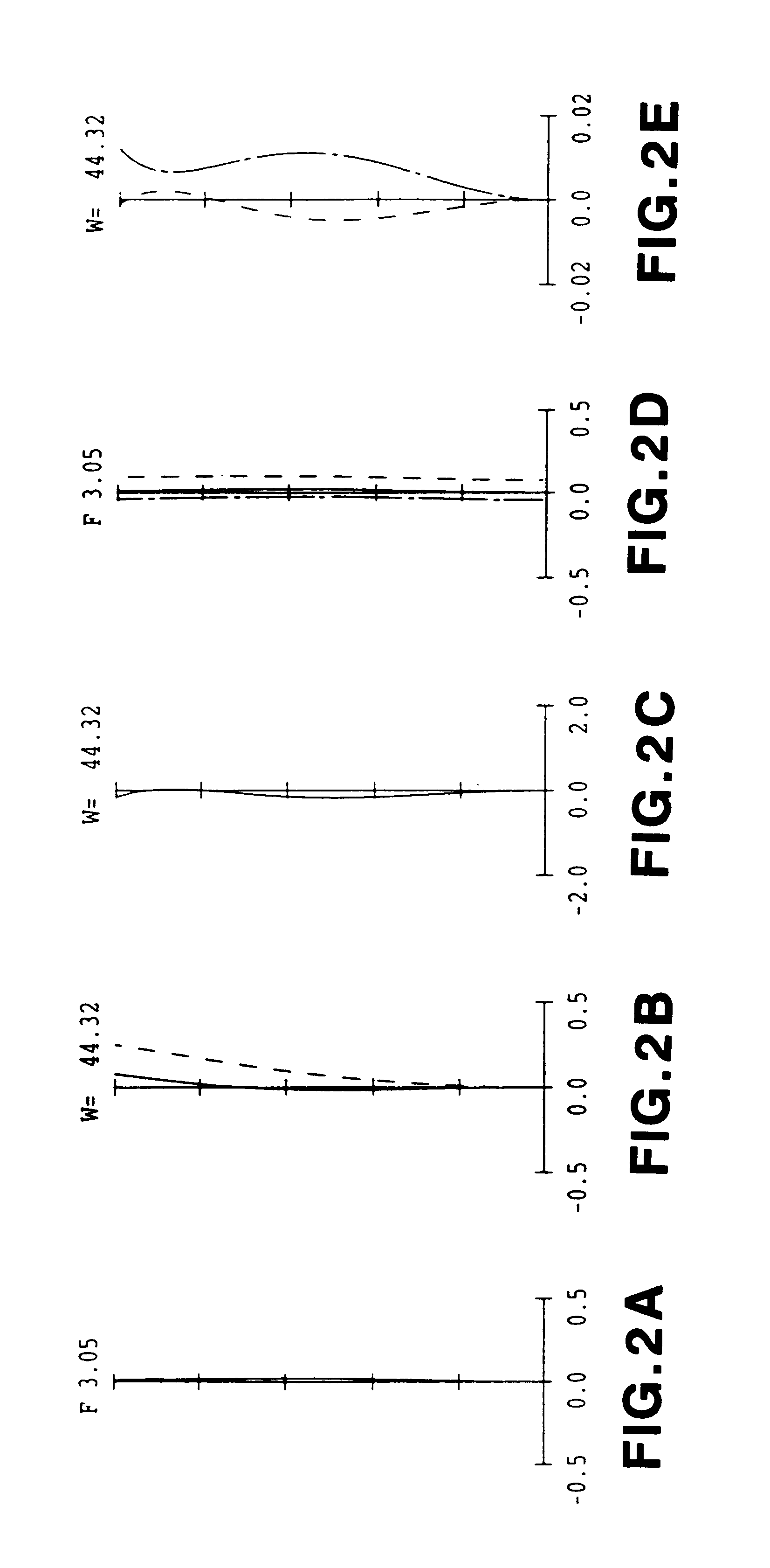Projection lens and projector using the same
a technology of projection lens and projector, which is applied in the field of projection lens, can solve the problems of large load for correction of distortion aberration and magnification chromatic aberration, non-uniform color and brightness, and inability to symmetrical principal rays
- Summary
- Abstract
- Description
- Claims
- Application Information
AI Technical Summary
Benefits of technology
Problems solved by technology
Method used
Image
Examples
example 1
is a projection lens having F.sub.NO =3.0, a focal length f=10.52, and a half angle of view .omega.=44.degree.. This example is designed for the purpose of having a long back focal length and telecentric properties, and correcting the magnification chromatic aberration and the distortion aberration by satisfying the relationships (1) to (5).
Table 1 shows specific values. "ri" in Table 1 represents the radius of curvature of the surface of each lens, and the subscript "i" shows the number assigned to the surface of each lens sequentially from the screen. "di" represents the thickness of a lens or the gap between lenses, and the subscript "i" shows the number assigned to each lens or each gap between lenses sequentially from the screen. "ni" represents the refractive index on the d-line of each lens, and the subscript "i" shows the number assigned to each lens sequentially from the screen. "vi" represents the Abbe number on the d-line of each lens, and the subscript "i" shows the numb...
example 2
is a projection lens having F.sub.NO =3.0, a focal length f=10.40, and a half angle of view .omega.=44.degree.. This example is designed for the purpose of having a long back focal length and telecentric properties, and correcting the magnification chromatic aberration and the distortion aberration by satisfying the relationships (1) to (5).
Table 2 shows specific values. The symbols in Table 2 represent the same as those in Table 1 of Example 1.
FIGS. 4 (a), (b), (c), (d) and (e) show the spherical aberration (mm), astigmatism (mm), distortion aberration (%), axial chromatic aberration (mm) and magnification chromatic aberration (mm) of Example 2, respectively. The graphs in FIG. 4 are plotted in the same manner as in FIG. 2.
Example 3
Hereinafter, Embodiment 1 will be described by Example 3 as another example with specific values.
FIG. 5 is a configuration diagram of the projection lens according to Example 3 of Embodiment 1. The components that have the same functions as those in FIG....
example 3
is a projection lens having F.sub.NO =3.0, a focal length f=10.42, and a half angle of view .omega.=44.degree.. This example is designed for the purpose of having a long back focal length and telecentric properties, and correcting the magnification chromatic aberration and the distortion aberration by satisfying the relationships (1) to (5).
Table 3 shows specific values. The symbols in Table 3 represent the same as those in Table 1 of Example 1.
FIGS. 6 (a), (b), (c), (d) and (e) show the spherical aberration (mm), astigmatism (mm), distortion aberration (%), axial chromatic aberration (mm) and magnification chromatic aberration (mm) of Example 3, respectively. The graphs in FIG. 6 are plotted in the same manner as in FIG. 2.
Example 4
Hereinafter, Embodiment 1 will be described by Example 4 as another example with specific values.
FIG. 7 is a configuration diagram of the projection lens according to Example 4 of Embodiment 1. The components that have the same functions as those in FIG....
PUM
| Property | Measurement | Unit |
|---|---|---|
| half angle | aaaaa | aaaaa |
| half angle | aaaaa | aaaaa |
| Abbe number | aaaaa | aaaaa |
Abstract
Description
Claims
Application Information
 Login to View More
Login to View More - R&D
- Intellectual Property
- Life Sciences
- Materials
- Tech Scout
- Unparalleled Data Quality
- Higher Quality Content
- 60% Fewer Hallucinations
Browse by: Latest US Patents, China's latest patents, Technical Efficacy Thesaurus, Application Domain, Technology Topic, Popular Technical Reports.
© 2025 PatSnap. All rights reserved.Legal|Privacy policy|Modern Slavery Act Transparency Statement|Sitemap|About US| Contact US: help@patsnap.com



